Summer Fades
- Mike Timmons
- Jul 27, 2024
- 5 min read
7/27/2024
It is the end of July, and I have been out working on getting shots for the photo challenge I am participating in. I do not plan to rehash all of that here. You can check out my previous post, if you are curious. July is definitely a month of winding down. Many birds are winding down their breeding season. Solstice has passed, and the days are getting shorter. Soon, migrant shorebirds will be passing through on their way south. While we still have a bit of summer left, it is definitely slowly fading into fall.
With spring migration a distant memory, I tend to spend a lot (all?) of my time focusing on grassland species. While July tends to be more of a month for vacations, in the time I am around, I tend to focus on the same species year-after-year. Why? The truth is that I really enjoy it. Although I really do need to expand the places I visit. I have two favorites. These locations are reasonably close, and I am comfortable birding them. The first is Prophetstown SP. The second is down at Camp Atterbury. I have posted about these places a number of times; so, I do not feel I need to go into much detail.
About the only thing I want to address about the locations is the current state of the site at Atterbury. It is beautiful, and there are a large number of native plants blooming there. The milkweeds have bloomed, and the Gray Coneflower is starting to fade. Same with the Bee Balm. Ironweed is just starting to come out. There are a few Butterfly Milkweed that are blooming, and there are a number of plants I do not recognize that look like they will bloom in the next couple of weeks. So, it is looking really good. As good as that sounds, the birding is a bit of a different story. Henslow's were showing in good numbers on my last visit. But there are still zero Grasshopper Sparrows. Maybe they just do not like this taller habitat? In two visit, I have only found one Bobolink. I have no idea what is going on with them. I will address that a bit more below.
How about some photos?
The photos are a mix of shots from Atterbury and Prophetstown. As I mentioned above, I was focused on trying to capture shots for a photo challenge I am participating in. This month's goal was to photograph a "birdscape"; so, a lot of these photos are focused around that. Since Sedge Wren and Henslow's Sparrow tend to perch up and sing when on territory, the shots are heavily focused on them. I believe both species are nesting for a second brood.
I need to get back out to Prophetstown and spend a bit more time there. I had planned to do that this weekend. The Compass Plant is blooming, and I still want to capture a Blue Grosbeak perched in one. I have seen them perched in one a number of times, but I have not gotten a shot I am happy with. The birds have been very active in a couple blackberry patches there, too.
Just a few more photos to share from this month. This series came from a Henslow's that was perched up in some Gray Coneflower. The morning was very foggy, and the dew was heavy. This bird was a bit wet and took a moment to shake out its feathers while perched so precariously. It is a testament to how good a bird is about stabilizing itself. In particular, you can see how the bird is shaking out all of its feathers, but both its feet and its head are still and sharp. Those parts are being held still while the rest of the bird is furiously shaking.
As for the challenge, this is what I plan to use for my "birdscape".

I like this photo for a few reasons. First, I think it meets the criteria I was looking for. It is a photo that shows a bird in its habitat, and you could remove the bird from the photo and still have an interesting (I think) shot. Second, it tells a very appropriate story for this time of year. Summer is winding down. The flowers are starting to fade, and a Sedge Wren is perched up and singing on territory. Sedge Wrens typically nest north of here for their first brood. Later in the summer, they move south and establish territory for another breeding cycle. Seeing the photo and knowing where it was taken would be enough for a lot of people to pinpoint a time of year. Anyway, that is what I see this this photo.
Finally, we have what is likely my last photo for this month. As I mentioned above, I visited Atterbury twice this month. I would have expected to find Bobolink there both times. The first time, I saw/heard none. This is, obviously, disappointing. Bobolink is not an extensive nester in the state. They are a long-distance migrant from South America. They are beautiful bids, and I love their calls and display flights. Having had a number of them at the beginning of the year but none in July speaks of failed nesting - for whatever reason. I am not sure if this has anything to do with the other activity there, or not. I am not a biologist. I cannot really even guess.
During my visit last weekend, I had much the same experience. I did not see or hear any Bobolink in the field. As I was leaving, I took a moment to try and photograph a Henslow's that was perched in some ironweed. I was pishing at the bird and hoping he would pop up higher in the plant. While I was doing this, another bird started calling from my left. I did not recognize the call, and it caught my attention. All I could see was a larger, pale bird perched on top of some blooming ironweed. This was exactly what I was hoping to see this visit but had not captured. I moved closer, and the bird actually let me circle round to get on the right light angle. I had to crouch down to get the bird against a decent background, and it sat there and waited for me to work it out.

I have no idea where this bird came from. It was the only Bobolink I saw. I pulled down my camera to quickly chimp and check exposure. When I looked back up, it was gone. Completely gone. It was not perched up anywhere else, and it had stopped calling. If I did not have a photo, I would have thought I had imagined it all. I have no idea if there are more there and they are just hiding or if this is just a lone bird. I would have thought males would be up perched and calling, if they were around. They always have been in the past; even as late as August. I am just really puzzled by what is going on at this location. The changes here have brought about changes in the birds. I am not sure it is all positive.
Thanks for reading,
Mike


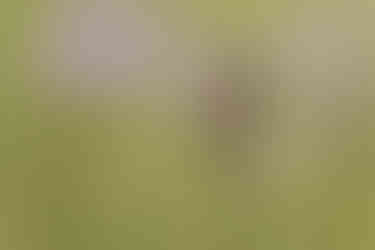







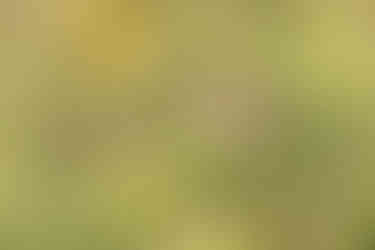


















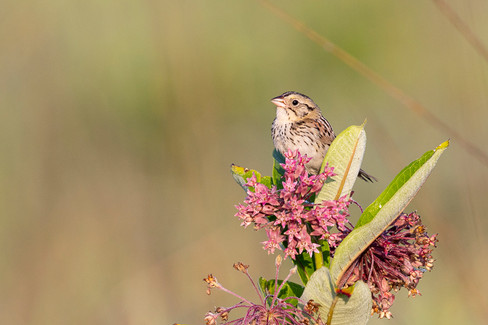






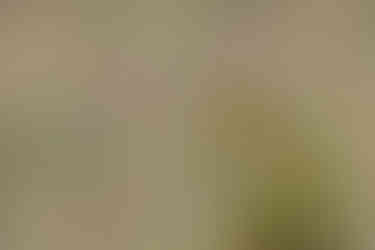






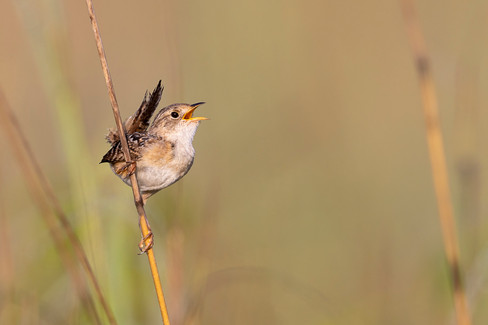















Comments